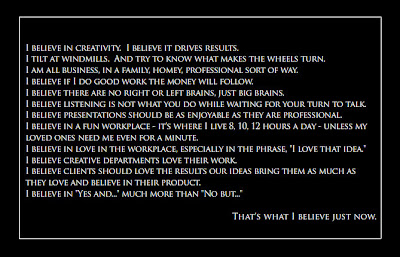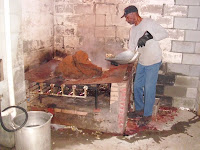We are gathered here as witnesses of a clash between two titans of the small brewery industry, heavyweights of hops, behemoths of barley, mammoths of malt…you get the idea. Finally the debate between which of these two juggernauts has the best
brewery and visiting experience will be settled. Separated by 64.9 miles (thanks Google Maps), these rivals are constantly waging war over Georgia and Southern beer drinkers’ delights.
(Insert 50’s era ring announcer voice here) “From the blue corner, with a total medal count of twenty-two, and 15 years in existence, fighting out of Atlanta, Georgia—Sweetwateeeeeer Brewing Company-ny-ny (sorry, I had to for dramatic effect). And its opponent, from the red corner, with a total medal count of twenty-one, and 10 years in existence, fighting out of Athens, Georgia—Teeeeerrrrrapin Beeeeeer Company (it was actually kind of fun that time).”
“Alright breweries, I want a good clean fight; no cheap shots, no hitting below the label, if at any time one of you is knocked down, the other will return to his corner until I give the signal for the fight to restart. At the sound of the bell, come out and clink bottles. Alright? Alright? Good, now let’s get it on!”
Now before we get this slugfest underway, I feel it’s important to explain the story behind this blog entry:
This past May/June I took a marketing research class, which was phenomenal by the way (BIG ups to Prof. Norvell), and my team’s final project was a presentation of the findings and suggestions based off of our qualitative and quantitative research done during the class. Our topic and company of interest was
Terrapin Beer Co. However, since we were trying to disguise bias throughout the survey and in-depth interview process, we sprinkled in other smaller breweries, such as:
Sweetwater,
New Belgium,
Magic Hat,
Full Sail, etc. After screening, we interviewed and surveyed around 70 people based primarily in Athens or Atlanta, aged 21-29, fairly balanced distribution by sex (~62% men, ~38% women), and had been to
both breweries. In our final survey, we did a comparison between Terrapin and Sweetwater based on the most important components of a brewery and visit (determined from previous consumer surveys that we conducted): Price, facilities, seating/seating area, atmosphere, tour, variety/offerings of beer, and taste. Through the use of Top Box vs. Bottom Two Box scores [for those not familiar w/ this technique, it compares the number of times people chose the highest possible satisfactions (ex. 5 on a scale of 1-5, 5 being the highest) against the number of times people chose the lowest two possible satisfactions (ex. 1 or 2 in this case)], Pearson Correlations, and confidence intervals, we were able to analyze the most important factors and their relation to overall satisfaction. Here is what we found…
(As much as I’d love to literally script and write out a fight between two personified beers, I actually have more important things to do, like school work and work for my internship, so this will be a Reader’s Digest version)
(Ding ding)
“And we’re underway here in tonight’s main event. Terrapin looks loose and energetic, while the more experienced Sweetwater is poised to outsmart this pup.”
(The lads at Terrapin)(Me, Julia, and Sean at Sweetwater)
Round 1: Price/Bang for your buck
Both breweries are pretty cheap, Terrapin is $10 for 8 tickets and Sweetwater is $8 for 6 tickets, and each price of admission is accompanied by a pint glass you get to keep. But where this round differentiates is in the pour; Terrapin will give you around 1/3 of a glass for each ticket, while Sweetwater tends to give you a little more, just shy of 1/2 a pint. EDGE: Sweetwater
Round 2: Facilities
Based on the results, it was a lot closer than expected. I thought Sweetwater would run away with this one, but they only just comfortably nudged out Terrapin. Sweetwater’s facilities are nice: wood bar, wood-floored inside, fully bricked outdoor area and patio, a big flat screen TV indoors, the works. While Terrapin is larger and has more room, it is certainly not as well—decorated; it’s got cement floors inside, a large backyard, a very strong scent of malt, barley, etc. (it is a brewery after all), and its restrooms aren’t as clean or fancy. EDGE: Sweetwater
Round 3: Seating/Seating Area
This one was a complete landslide. Sweetwater has a small, small seating area inside: few seats at the bar and 4-5 tables with two chairs each, and zero seating outside except for one picnic table. Terrapin boasts tables indoors, long and circular tables outdoors, and about one hundred extra seats and chairs to do with as you please. EDGE: Terrapin
Round 4: Atmosphere
Sweetwater has a great outdoor patio/deck area, but what may have hurt them in this category is the lack of size and space available. No one likes the feeling of being all cramped together. On the other hand, Terrapin has tons of space both indoors and out; they provide corn-hole boards for patrons, and have live music playing outdoors on most occasions. Also, you can unleash your dog here to let him/her frolic and play with other canines, unlike Sweetwater. EDGE: Terrapin
Round 5: Tour
For starters, Sweetwater’s tour is separated from its bar area, which helps cut down on the pungent brewery smell, and gives you a pretty good feel for the brewery and most of its aspects. The tour takes you on a walk by the distillers, mashers, etc., to the bottling area, onto the packaging sector, and you finish up in the storage fridge where there are cases of beer all around you (aka. Heaven). The tour guides are also very engaging, funny, and I’ve never had the same one twice, which allows for each guide to put their own spin and style on it. At Terrapin, the tour, if you could call it that, simply walks you to in front of the distillers where you will be spoken to and given a history of the company and then that’s about it. Personally, I have taken the tour four times and had the same woman give me the tour each time. What’s that saying, “Variety is the spice of life?”….EDGE: Sweetwater
Round 6: Variety/Offering of Beers
Fairly close, almost a draw. Both Sweetwater and Terrapin offer a good selection of beers on tap at the breweries. Furthermore, they also do a fine job of cycling the lineup fairly often, with the exceptions of their cornerstone beers. However, Terrapin just pipped Sweetwater at the finish. While not 100% sure of the reasoning behind it, I believe it’s because Terrapin more regularly cycles their beers and also pulls out their infamous “Side Projects” as options on a fairly regular basis. EDGE: Terrapin
Round 7: Taste
All tied up going into what may be or seem like the most important round and category to most beer drinkers. Not a surprise to me though, but maybe that’s because I’ve analyzed the research and knew it already. Both have their signature and cornerstone brews, Terrapin has Rye Pale Ale and Golden Ale and Sweetwater has Sweetwater Blue and Sweetwater 420, along with seasonal and other assortments. All taste great, too. Personally, I don’t have a super refined palate complete with two thousand papillae per square centimeter on my tongue, so I don’t really tell that large of difference when comparing similar brews from each. However, the people have spoken and, by a narrow margin, have selected Sweetwater. EDGE: Sweetwater
“Final seconds of the fight! These two middleweights are slugging it out at the center of the ring! Standing toe-to-toe, trading blow after blow after blow! (Ding, Ding, Ding) The two breweries embrace, each raising their arms as if they’ve believe they’ve won. This one is going to the judges!”
“The judges have scored this fight 3-4, 3-4, 3-4—in a unanimous decision—for the NEW champion of small breweries in Georgia—Teeeeeerrrrapin Beeeeer Companyyyy!”
Now hold up, before you go getting on me and questioning my math skills or if I know how to count, let me explain the reasoning behind this. Immediately you’re thinking “What the hell?! Sweetwater had 4 pts, Terrapin had 3 pts, it’s plain to see that Sweetwater won.” Ahhh, but there is a little something called weighting and correlation my friends. While Sweetwater did win more rounds/categories, they didn’t win the ones that mattered most. According to our research and analytics, such as Pearson correlation, the categories that most factored in to overall satisfaction were: facilities (won by Sweetwater), atmosphere (won by Terrapin), seating (won by Terrapin), variety (won by Terrapin, narrowly) and price (won by Sweetwater, but was essentially a coin flip, so we’ll call that a wash).
I know, I was shocked by some of those factors, particularly facilities and seating, but the fancy and expensive analytic software that our professor ran the numbers through and helped us analyze don’t lie. This goes to show how important it is to understand your target market, their opinions and feelings on the various aspects that encompass one’s attitude toward a product and company, and to do complete and thorough research to back it up. In the early stages of our research, my team and I asked what the main purpose of going to the brewery was; the response “to be with friends and/or family” was the overwhelming majority, followed by “to drink beer”, of course. Maybe it all goes back to what I was saying in my previous blog entry, by being able to create an atmosphere and experience that is bonded and linked with a company and its product, you’ve just been able to connect that consumer to you emotionally. Through its atmosphere, enough seating for you and all of your friends/family, and great variety, I hereby proclaim Terrapin the victor and king of Georgia small breweries. At least for now…
















